Iron Pnictide Superconductors: Discovery Status
Hideo Hosono1,2
1Frontier Research Center & Materials and Structures Laboratory Tokyo Institute of Technology Nagatsuta 4259, Midor-ku, Yokohma 226-8503 , 2Transparent Functional Oxide Project, ERATO-SORST Japan Science and Technology Agency Japan
Material Matters Volume 4 Article 2
Introduction
In general, oxides of representative metals are the most abundant and stable materials on earth, and they are also environmentally friendly. Although they are not believed to become electron-active materials, and although they have been used as ingredients in traditional materials such as cement, glass, and porcelain, only a few active functions have been found for them. In fact, college textbooks describe the materials listed above as typical insulators. However, a widely accepted view that “a transparent oxide cannot be a platform for electro-active materials” comes only from phenomenological observation. We think it possible to realize a variety of active functionalities in transparent oxides through appropriate approaches based on deep insight into the electronic structures of these oxides. Therefore, we have concentrated on material exploration and device application of transparent oxide semiconductors (TOSs).1
We have explored novel transparent oxide semiconductors, focusing on the low dimensional structure embedded in the crystal structure: in particular, a 3-dimensionally (3D) connected nanometer sized cage structure and a 2-dimensional (2D) layered structure composed of a narrow gap semiconductor material layer sandwiched between wide-gap insulating layers. We expect an emergence of unique electronic properties resulting from a low-dimensional electronic state.
A typical example obtained from the 3D-connected subnanometer- sized cage structure is the conversion of refractory oxide 12CaO·7Al2O3 (C12A7) into both a transparent semiconductor and a metallic conductor by electron-doping through a conduction band composed of 3D-connected sub-nanometer-sized cages. This material is a band insulator with a band gap of ~7eV, and it is a known constituent of alumina cement. Three-dimensionally connected sub-nanometer-sized cages with a positive charge form another conduction band which is located ~2eV below the conduction band primarily composed of 5s-orbitals of Ca ions constituting cage walls. While electron-doping to the cage wall conduction band is impossible due to low electron affinity, the cage conduction band allows it to be doped by other methods. When the doped electron concentration reaches ~1x1021 cm-3, an insulator-metal transition is observed, and the metallic C12A7 exhibits a superconducting transition at 0.2-0.4K. This means a cement superconductor has been realized!2
A representative example obtained from the latter structure is a transparent P-type semiconductor LaCuOCh (where Ch=S and Se). Lack of P-type material posed a major obstacle in TOSs for extension as transparent oxide electronics. In 1997, we reported the first p-type TOS, CuAlO2, with a layered structure and a chemical design concept.3 Although the discovery of a series of p-type TOSs led to the realization of current-injection, ultravioletemission from Pn heterojunctions composed of all TOSs (e.g., p-SrCu2O2/n-ZnO) in 2000, performance of p-type TOS must be improved for more realistic applications. We chose LaCuOCh as the candidate material. This material belongs to the tetragonal lattice category and is composed of alternatively stacked semiconductive (CuCh)- and insulating (LaO)+ layers. Since the location of the valence band maximum and the conduction band minimum is different between bulk CuCh2 and La2O3, we expect to statically separate the carrier transport layers from the impurity-doped layer.
Electromagnetic Properties of LaTMPnO
When a pnicogen anion (Pn) with -3 charge replaces a chalcogen anion (Ch) with -2 charge in LaCuOCh, a transition metal cation (TM) with +2 can substitute for Cu+ with 3d10 electronic configuration. Many intermetallic compounds exist between TM and Pn, and they have various magnetic properties. Thus, we expected to find intriguing electromagnetic properties arising from the 2-dimensional electronic structure of TMPn in the compound LaTMPnO. This was the motivating force to research this series of compounds.
Figure 1 summarizes the electromagnetic properties of LaTMPnO that have been clarified to date.3 The electromagnetic properties drastically vary with the number of 3d electrons in TM; Mn is antiferromagnetic (AF) semiconductors while Co is a ferromagnetic (FM) metal, and Ni is a paramagnetic metal at ambient temperature and superconconductor at low temperatures.4 At the same time, when TM is Fe, the properties of P and As based systems are also different. LaFePO is a paramagnetic metal exhibiting a superconducting transition at 4K. This behavior is almost the same as that of LaNiOCh.
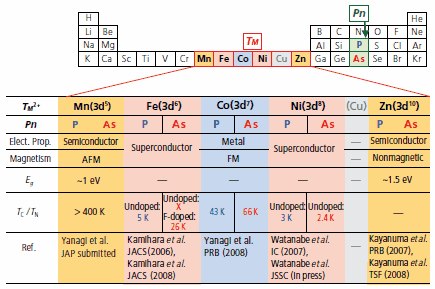
Figure 1.Summary of electromagnetic properties in a LaTMPnO system.
On the other hand, LaFeAsO exhibits a unique temperature dependence. It is a paramagnetic metal at high temperatures, but as the temperature decreases, a sudden decrease in resistivity and magnetic susceptibility occurs at ~160K, reaches a minimum, and then increases again as shown in Figure 2. No superconductive transition is observed. It is worth nothing that the system of TM with an odd number of 3d electrons has a long-range spin ordering and does not exhibit superconductivity, whereas the system of TM with an even number of 3d electrons is a paramagnetic metal exhibiting superconductivity. At this stage, we observed superconductivity only for LaFePO, Ca- or F-doped LaFePO,5 and LaNiPnO (Pn=P and As).6
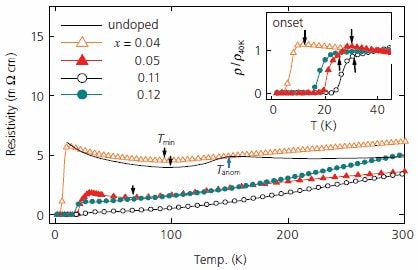
Figure 2.Temperature dependence of resistivity for LaFeAsO1-xFx with x.
Emergence of TC in LaFeAsO
Yoichi Kamihara, a postdoctoral fellow in charge of the Fe-system, attempted an aliovalent substitution of a doped carrier to LaFeAsO, following our previous experience with superconducting temperature (TC) enhancement in LaFePO.5 The result was marvelous! Although no noticeable change was seen upon the doping of Ca to the La sites, F-doping to the O-site induced a drastic change in the ρ-T curves as shown in Figure 3. As the F-content increases, the knick around 150K disappears, and zero-resistivity begins to appear at T> 4K for F>4 mol%. This temperature further increases up to 32K (onset) when fluorine content rises up to 11%. The observed zero-resistivity was confirmed as being due to superconductive transition in the bulk by measurements of magnetic susceptibility and heat capacity.
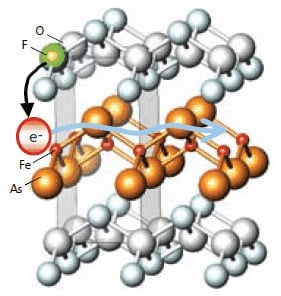
Figure 3.Crystal structure and role of F-doping in LaFeAsO1-xFx
We noted that the emergence of TC accompanies the disappearance of a sudden ρ-drop around 160K. Although TC was found for LaFePO, LaNiPO, and LaNiAsO, we observed no such ρ-drop in any of them.
What happens around 150K in LaFeAsO?
We assumed that the ρ-drop at ~150K was closely related to the emergence of high TC. This could be due to spin-ordering or a crystallographic phase transition. Although neutron diffraction is the best technique to check this possibility, we needed a lot of time to prepare the sample amount (~15g) to acquire reliable data. Thus, we measured X-ray diffraction as soon as we could and obtained a beam time for the low-temperature powder XRD at Spring-8 as courtesy of Dr. Masaki Takata of RIKEN. The results of the XRD shown in Figure 4 were unambiguous.4 Crystallographic transition from tetragonal (Space group: P4/nmm) to orthorhombic phase (Cmma) was observed at ~155K for the un-doped sample, but no such transition was observed for the F-doped, superconductive samples. A two-peak structure was observed in the heat-capacity measurement of the un-doped sample. The location of the high temperature peak agrees with that of the crystallographic transition.
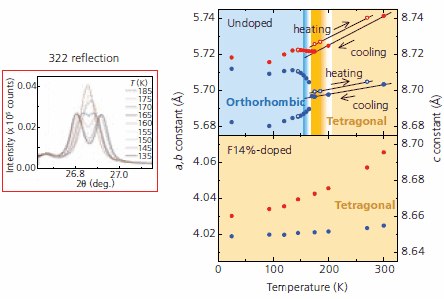
Figure 4.(Left) change in X-ray diffraction 322 peak of undoped LaFeAsO with temperature. (Right) Lattice constants of undoped and F14%-doped LaFeAsO as a function of temperature.
Local probe techniques, NMR on 139La, and a Mossbauer spectroscopy of 57Fe provided different information. Both measurements revealed that anti-ferromagnetic ordering occurred at ~145K, corresponding with the low-temperature heat capacity peak. But when electron carriers were doped, anti-ferromagnetic ordering continuously decreases and TC appears, reaches a max, and then decreases. Figure 5 is an electronic phase diagram of this system.
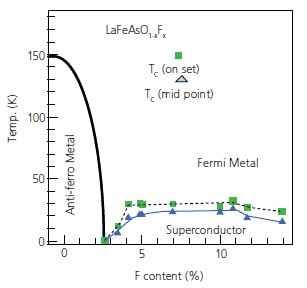
Figure 5.Electronic phase diagram of LaFeAsO1-xFX
A Brief History of Fe(Ni)-Based Superconductors
Since our report on LaFeAsO0.9F0.1 with TC=26K, more than 500 papers have been published in peer-reviewed journals, and more than 300 unpublished manuscripts have been posted on preprint servers. Figure 6 summarizes the milestone papers focused on materials as a function of the received date (or posted date for the preprint).4 The Takahashi Group of Nihon University and our group submitted a paper 8 at the end of February 2008 that applying high pressure results in a steep increase in the TC of LaFeAsO0.9F0.1 to 43K at 4GPa.This TC was the highest, with the exception of cuprates, among all superconductors reported so far. The high sensitivity of superconducting temperature to pressure quickly manifested as the replacement of the La ion with the largest ionic radius among the rare-earth ions because the replacement of a larger-sized ion with a smaller-sized ion leads to the chemical pressure effect on the structure. Several Chinese groups (Chinese Academy of Science, U. Sci.&Tech. China) performed a series of excellent works; X.H. Chen et. al. (USTC) reported TC=43K on March 25 for SmFeAsO1-xFX. On March 26, G.F. Chen et. al. (CAS) posted TC =41K for CeFeAsO1-xFX. Ren et. al. (CAS) posted TC=52K for PrFeAsO1-xFX on March 29, and posted TC=55K for SmFeAsO1-xFx on April 13. Ren et al.9 in CAS first proposed the effectiveness of high-pressure synthesis. Electrondoping was possible via the formation of oxygen vacancy instead of substituting F for O-sites. Synthesis at higher temperatures resulted in the improvement of crystalline quality of ReFeAsO, but the maximum temperature attainable was limited to ~1150 °C by the softening of a silica glass tube used as a conventional reaction vessel. High-pressure synthesis removed this limitation because it uses a BN vessel instead of a silica glass tube.
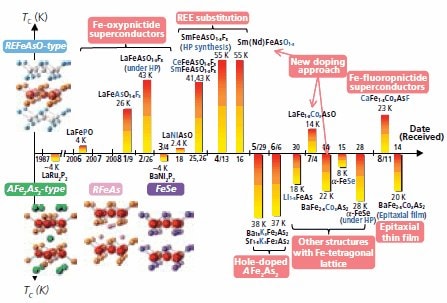
Figure 6.Progress in Fe(Ni)-based superconductors
Sefat et. al.10a Tennessee group, recently reported an interesting doping method: electron-doping by substitution of the Fe2+ (3d6) sites with Co2+ ions (3d7). This doping method was surprising because replacement of Cu2+ with other transition metal cations in cuprates largely reduces TC. A TC robust enough to substitute for Fe ion sites is quite unique for Fe pnictide superconductors, and lends greater flexibility to a carrier doping method for inducing superconductivity.
It is a natural idea to explore the superconductivity in multi-layered TMPn for high TC if you know the history of high TC cuprates. The first report on superconductivity in this type of material was on LaRu2P2 in 1987 by Jeitschko et al.11 Mine et al.12 who reported a TC of 4K in BaNi2P2 with a bi-layered structure on March 3. Temperature dependence of resistivity has no anomaly around 150K like that of LaNiPnO or LaFePO. On July 17, Rotter et al.13 reported TC of 38K in Ba1-xKxFe2As2. The parent material BaFe2As2 has properties similar to LaFeAsO with respect to crystallographic transition from the tetragonal (I4/mmm) to orthorhombic (Fmmm) phase at 140K, ρ-T curve, and AF transition. It is phenomenologically obvious from the comparison between BaNi2P2 and BaFe2As2 that to achieve the high TC the parent phase experiences a crystallographic transition at higher temperatures accompanying AF-ordering. Charge carrier types effective for the emergence of superconductivity in this series of materials appeared to be the reverse of the Fe oxypnictides: hole doping works well for the former, whereas electron-doping does for the latter. Although the effective charge carrier for inducing superconductivity is different, the phase diagram in the Fe-pnictides is close to that in the cuprates.
The common structural unit in ReFeAsO and BaFe2As2 is the square lattice of Fe. Hsu et al.14 reported superconductivity at 8K in β-FeSe with a PbO-type structure on July 15. This material with tetragonal symmetry at RT has the simple crystal structure consisting of infinite stacking FeSe layers in which Fe forms a square lattice. An increase in TC of β-FeAs after applying high pressure to a maximum of 28K was posted on July 28.
Perspective: Strike While the Iron is Hot
Table 1 summarizes the properties of three representative families of superconductors. A number of similarities have been reported between Fe-based superconductors and cuprates. However, there are two distinct differences between the two groups of materials: the nature of the parent phase and the robustness to element substitution. The parent phase of high TC-cuprates is a Mott insulator, characterized by high repulsive energy among Cu 3d electrons, Udd, whereas the mother phase of the Fe-based superconductors appears to be metal. The highly delocalized nature of Fe 3d-electrons in the latter is consistent with the robustness of TC upon replacing Fe with Co ions. We know that the band structure of the parent compound in the cuprates is largely altered by carrier (hole) doping. Description by a simple band model, i.e., the band structure of the parent material remains essentially unchanged even after carrier doping, is inappropriate due to strong electron correlation effects. On the other hand, the situation looks different for the Fe system. According to a recent evaluation by Malaeb et al,15 the magnitude of Udd for LaFeAsO is rather smaller than that of cuprates. If description by the rigid band models is effective for this system, increases in carrier electrons originating from Co2+ substituting at the Fe2+ site should lead to a similar result as F-substitution to the O-sites in LaFeAsO. The latter feature adds the possibility of discovering further candidate materials for new superconductors.
Figure 7 shows the TC of some known superconductors versus the date of their discovery. The TC in iron pnictide superconductors is second to high temperature cuprates, exceeding MgB2, which has the maximum TC of conventional metal superconductors which can be explained by the BCS theory (electron-pairing required for superconductivity is mediated by lattice vibrations).
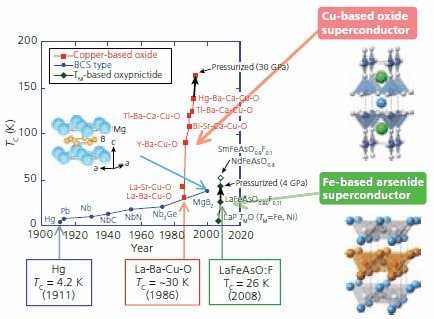
Figure 7.TC of some known superconductors vs. the date of their discovery.
We have experienced that the old saying is mostly correct: “Strike while the iron is hot.” I hope cooperation and competition among active researchers will enhance the TC of new superconductors toward the ultimate goal of room-temperature superconductors.
References
如要继续阅读,请登录或创建帐户。
暂无帐户?